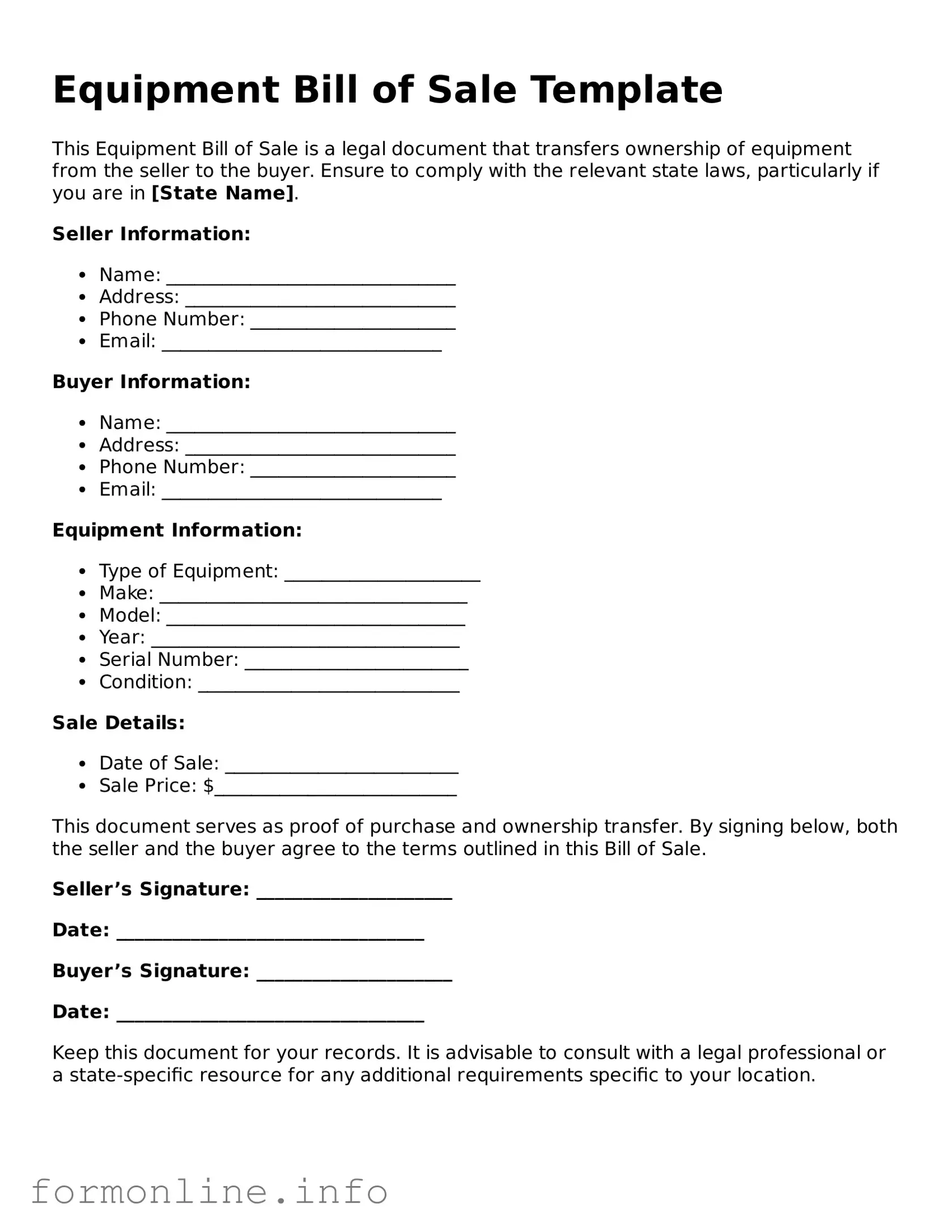The Equipment Bill of Sale form shares similarities with a Vehicle Bill of Sale. Both documents serve as proof of transfer of ownership from one party to another. They typically include essential details such as the buyer's and seller's information, a description of the item being sold, and the sale price. Just like the Equipment Bill of Sale, the Vehicle Bill of Sale can also serve as a legal record in case of disputes regarding ownership or condition of the vehicle after the sale.
To further facilitate your understanding of property transfers, you can refer to a guide on the essential bill of sale document by visiting comprehensive New York Bill of Sale. This resource will help clarify any questions you may have regarding the requirements and processes involved.
Another document that resembles the Equipment Bill of Sale is the Real Estate Bill of Sale. This form is used to transfer ownership of personal property that is included in a real estate transaction, such as appliances or furniture. While the Equipment Bill of Sale focuses on equipment, the Real Estate Bill of Sale ensures that all included items are documented and legally recognized during the property transfer process. Both documents are crucial in establishing clear ownership and protecting the interests of both parties.
The Equipment Bill of Sale is also similar to a Personal Property Bill of Sale. This document is utilized for the sale of personal items, including furniture, electronics, and collectibles. Like the Equipment Bill of Sale, it outlines the specifics of the transaction, including a detailed description of the item, the sale price, and the identities of the buyer and seller. Both documents help to formalize the transfer and can be used to resolve any future disputes regarding ownership.
A Rental Agreement can also be compared to the Equipment Bill of Sale. While a Bill of Sale signifies a permanent transfer of ownership, a Rental Agreement establishes the terms under which a piece of equipment can be used without transferring ownership. Both documents detail the responsibilities of the parties involved, but the Rental Agreement focuses on the duration of use and payment terms, whereas the Equipment Bill of Sale is concerned with the final sale.
The Invoice is another document that shares characteristics with the Equipment Bill of Sale. An Invoice is typically issued by a seller to request payment from the buyer for goods or services provided. While it does not transfer ownership, it often includes similar information such as item descriptions, prices, and buyer and seller details. Both documents serve as important records for financial transactions and can be used for accounting and tax purposes.
Lastly, a Warranty Deed has some parallels with the Equipment Bill of Sale, particularly in terms of establishing ownership. A Warranty Deed is used in real estate transactions to guarantee that the seller holds clear title to the property and has the right to sell it. Similarly, the Equipment Bill of Sale ensures that the seller has the authority to transfer ownership of the equipment. Both documents provide assurance to the buyer regarding the legitimacy of the transaction and help to protect against future claims of ownership.
